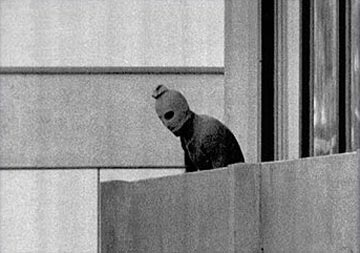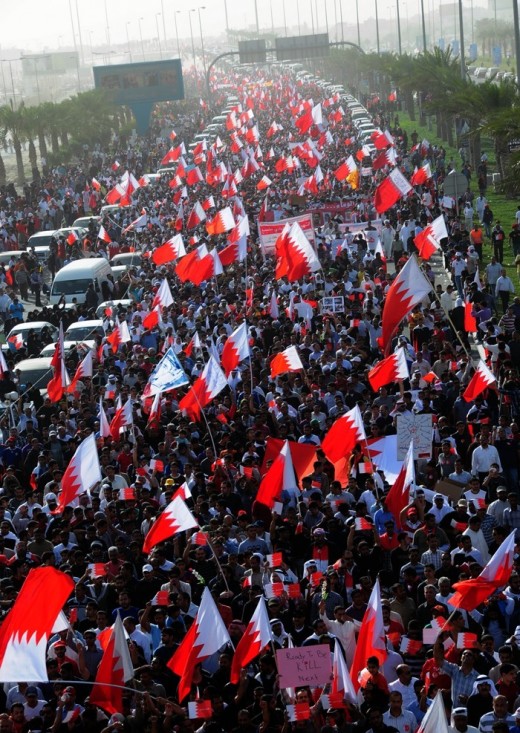- HubPages»
- Education and Science»
- History & Archaeology»
- History of the Modern Era
10 World Changing Revolutions (That Are Younger Than Your Parents)
In school and on the internet (or in books, if you want to feel ancient), we read about all these world-changing revolutions that happened. Of course, these all happened hundreds of years ago and anyone and everyone who was ever a part of these revolutions is now dead. Ask yourself if George Washington, Maximilien Robespierre, Vladimir Lenin, and Spartacus are still alive. Hopefully, your answer is “no.”
However, there are a few revolutions that changed the world, and these happened surprisingly recently. Heck, some might even be younger than some of the people reading this list. The last 50 years had their fair share of exciting changes. Here are 10 revolutions that are younger than your parents.
10. Arab Spring

In 2010, a fruit vendor in Tunisia set himself on fire after being slapped by a policewoman and being publicly humiliated. The people of Tunisia were having none of that, and they began to protest the regime of President Zine El Abidine Ben Ali. A month later, President Ben Ali fled and was deposed as president of Tunisia. This would set off one of the biggest chain reactions in recent and perhaps even modern history.
After Ben Ali fled, nearby countries like Egypt, Syria, Bahrain, Libya, Yemen, and others all began to hold their own protests as well. After years of dictators and human rights abusers having a stranglehold on their countries, the people had enough and decided to act. Arab Spring is responsible for conflicts like the Libyan Civil War, Egypt protests, the Syrian Civil War, and others.
9. Carnation Revolution

The Carnation Revolution in Portugal was a peaceful military coup (if there is such a thing) that deposed dictator Marcelo Caetano in 1974. It is seen by many as the end of European colonialism in Africa. In fact, one of the first acts of the new government was to relinquish control of their colonies.
However, as soon as Portugal left, the colonies descended into chaos. East Timor was invaded by its neighbor Indonesia in 1975, and over 100,000 people were killed. Angola, the last European colony in Africa, was granted independence in 1975 as well before it fell victim to a bloody civil war as the three main rebel groups, the People’s Movement for the Liberation of Angola, the National Liberation Front of Angola, and the National Union for the Total Independence of Angola, fought for control and power.
8. Black September in Jordan

In 1970, King Hussein of Jordan and the Palestinian Liberation Organization (PLO) got into a teeny bit of a scuffle that left several thousands of Palestinian fedayeen dead. One particular Fedayeen leader, Abu Ali Iyad, was supposedly tortured and killed by the Jordanians. His death led to the creation of a terrorist group called Black September, who named themselves after the month when the conflict happened. They would then begin starting all sorts of chaos, such as assassinating the prime minister of Jordan and attempting to assassinate King Hussein.
The group, however, is most famous for their hostage taking and killing of 11 Israeli athletes at the Munich Games in 1972. They demanded the release of 234 prisoners, particularly the founders of the German terrorist group The Red Army Faction. However they were unsuccessful in their mission, so they dissolved in 1974, after committing one of the most famous attacks in history.
7. People Power Revolution

Ferdinand Marcos was dictator of the Philippines for over 10 years. Towards the end of his reign, one of his political opponents, Ninoy Aquino, was assassinated after returning from his self-imposed exile from the United States. This was soon followed by a snap election where Aquino’s wife, Cory Aquino, ran for president. She lost the election, which raised several questions regarding the validity of the results. The people of the Philippines, seemingly fed up with his tomfoolery, decided to oust him.
Various people such as Archbishop of Manila, the ironically named Cardinal Jaime Sin, called the nation to action. In one of the most famous “bloodless” revolutions, over a million Filipinos marched to a major road called EDSA and demanded change and presumably caused one of the worst traffic jams ever.
While Marcos initially sent troops to deal with the problem, they eventually withdrew and turned on him, because they thought better than to open fire on a million people. Marcos and his family had to flee the country, and his wife left behind more than a thousand pairs of shoes. A new president, Cory Aquino, was sworn in, and all was peaceful until there were multiple coup attempts against her.
6. Cedar Revolution

Throughout the 90’s, Syria was bullying Lebanon politically. The Lebanese Civil War had just ended, and Syria was all up in Lebanon’s business, quashing anti-Syrian rhetoric and opposition. Lebanese Prime Minister Rafik Hariri refused to bow down to Syria, and even stepped down when he was asked to renew the term of Syrian puppet president Emile Lahoud. This made him very popular with the Lebanese. And then he blew up in a car bombing.
250 thousand people attended his funeral and even more demanded that the government suspend suspected aiders of the assassination and that the UN investigate. Animosity towards Syria was at an all-time high. People were marching every day to protest the government. Businesses shut down to join these marches. Syria’s own troops were unable to contain the wrath of Lebanon. After facing much pressure from the international community, Syria announced its withdrawal from Lebanon.
5. Log Revolution

Despite sounding like either the name of a movie where the trees rise up against humanity and reclaim the world or something you learn in trigonometry, the Log Revolution was a big deal. It started the Croatian War of Independence, and the end result was the displacement of nearly half a million people, and the death of close to 10 thousand civilians.
At the start of the ‘90s, tensions in Croatia were at an all-time high. There was bad blood between the Serbs and the Croats within the country, and the first free elections of the country only worsened matters.
Yugoslavia deployed parachutists in the country, and the Serbs in the area refused to recognize the authority of the new Croatian government, instead siding with Yugoslavia. These tensions went on for nearly a year before the Serbs decided to start a war and take control of many parts of Croatia to create a new Serbian state.
4. Color Revolutions

The Color Revolutions was a term given to several peaceful demonstrations and movements in former Soviet states, particularly to the 2003 Rose Revolution of Georgia, the 2004 Orange Revolution in Ukraine, and the Tulip Revolution in Kyrgyzstan a year later. Some also consider the 2000 Bulldozer Revolution of Yugoslavia as a color revolution as well, but bulldozer is not a color, and the name “Yellow Revolution” was taken by the Philippines when they ousted Marcos out of power while wearing yellow, so the Yugoslavians were out of luck in that matter.
The Rose Revolution was organized to protest the results of a parliamentary election. The protesters gave roses to the soldiers who were there to maintain order, and these soldiers laid down their guns. After twenty days, Georgia’s president, Eduard Shevardnadze, resigned and stepped down from the presidency.
Funnily enough, the point of the Orange Revolution a year later protested the results of the presidential elections. The public claimed that Viktor Yanukovych only won the election through electoral fraud, corruption, and voter intimidation. The people demanded a revote, and when it was completed, it was revealed that Yanukovych’s opponent, Viktor Yushchenko, actually received 52% of the vote, meaning he won the election. He was inaugurated, and the revolution ended.
Kyrgyzstan decided to try their hand at this whole “don’t kill anyone while protesting” thing a year later when, surprise, surprise, an election was ruined by fraud and corruption. Opposition candidates were disqualified, there were several accounts of vote buying, and the country’s one independent printing press was shut down before the polls. The people started the Tulip Revolution and deposed President Askar Akayev.
3. 2011 Bahraini Uprising

Unlike many other conflicts on this list, the Bahraini Revolution is still ongoing. These are supposedly peaceful protests against the ruling Al Khalifa family, but the government response is anything but. Demonstrators are arrested and even killed. A Bahraini activist was arrested and sentenced to six months in prison for “insulting a public institution” on Twitter.
It all started because of the Arab Spring. Bahrain realized that, just like their neighbours, their governments were kind of terrible, so they peacefully protested. Of course, the kind of terrible government reacted by sending in mercenaries to repress the revolt. Of course, this only made things worse, and now the people of Bahrain are actively calling for the abdication of King Hamad.
As of the time of writing, the Uprising has still not ended, and it is hard to say if it will end, or if the situation will devolve much like in Syria.
2. Ethiopian Civil War

For some reason, Ethiopia was still an empire in the ‘70s, despite the fact that they’re not even the in the top 5 largest nations in Africa. Ethiopia is around the size of Alaska. While it’s pretty large for a country, it’s hardly “empire” material. Their emperor was also not very good.
Problems such as drought and government corruption led the military to remove Emperor Haile Selassie, seize power, and establish a new government called the “Derg”. This new government then began to kill a whole bunch of opposition leaders, which is not good. This led to people rebelling against the government. Both sides then tortured, executed, imprisoned, or assassinated many of their opponents. While this was happening, the Derg was also fighting rebels who demanded independence for Eritrea, a small region north of Ethiopia.
Combine all these factors together, and you get a bloody conflict that lasted twenty years and left more than a million deaths.
1. Northern Ireland Conflict

The Northern Ireland Conflict, also called the Troubles (which is really quite the understatement), was a thirty year conflict that effectively split Ireland into two. From 1968 to 1988, violence and bloodshed filled the streets of Northern Ireland.
While the battle was between the unionist Protestant majority and the republican Catholic minority, this was hardly a religious conflict. The Irish were simply fighting over what was to become of their nation.
The unionists wanted to remain part of the United Kingdom, while the republicans wanted to join the Republic of Ireland. This sparked a violent war that killed 3 thousand people before finally being settled by the Good Friday Agreement, which established the relationship between Ireland, which remained independent, Northern Ireland, which was still part of the United Kingdom, and the United Kingdom, who were in the middle of the conflict.








